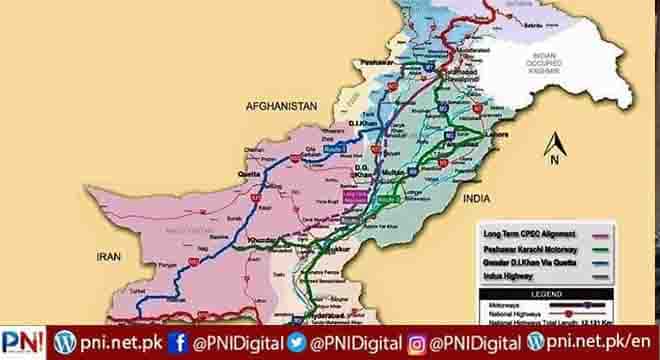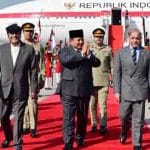BEIJING, Jan 27 (APP): The China Pakistan Economic Corridor (CPEC) Western Route development is strategically significant to realize broader connectivity and regional common prosperity.
These views were expressed by Cheng Xizhong, visiting Prof. at Southwest University of Political Science and Law, and former Defence Attache in South Asian countries said.
The construction of the Hakla-D I Khan Motorway, a milestone achievement on the CPEC Western Route, has been completed and put into operation, which provides fast connectivity to the locals as well as paves the way for preparing the shortest route for logistics moving to and from northwest China’s Xinjiang Uygur Autonomous Region to Pakistan’s Gwadar Port.
Now, transportation infrastructure is the top priority. So far, the construction of the 235 km Quetta-Sohrab Road, the 449 km Surab-Hoshab Road, the 193 km Hoshab-Gwadar Road, the 210 km D I Khan-Zhob Road and the 297 km Hakla-D I Khan Motorway have been successfully completed, he said in his article published by China Economic Net (CEN).
Other transportation infrastructure projects on the CPEC Western Route, including the 305 km Zhob-Quetta Road, the 110 km Basima-Khuzdar Road, the Nokundi-Mashkel Road and the 146 km Hoshab-Awaran Road are under construction, especially the D I Khan-Zhob Road and Zhob-Quetta Road under construction will minimize the travel time from the federal capital to Quetta.
Compared with the eastern region, western areas of Pakistan are underdeveloped. Therefore, he believed that the construction of the CPEC Western Route and development of the western areas of Pakistan are of great strategic significance.
First, the construction of transportation infrastructure can drive the development of other infrastructures such as energy, modern agriculture and industry and Special Economic Zones (SEZs), completely changing the long-term lag of social and economic development in the western region and usher in the prosperity in western part of the country.
Second, the surrounding areas of the roads and motorways on the CPEC Western Route comprise of landscapes and farms producing vegetables, pulses, grains and fruits, especially the high-quality mangoes and dates.
Therefore, western development will open up the fertile hidden areas of North Punjab, Southern Khyber Pakhtunkhwa and Balochistan to all kinds of trade and business. Thus, it can promote large-scale employment, eliminate local poverty and enable the local people to embark on the road of prosperity together with people in other parts of the country.
Third, from the perspective of regional connectivity, the construction of the CPEC Western Route has very important regional strategic significance. Western Pakistan is adjacent to Afghanistan and Iran. Once the transportation infrastructure in western part is fully completed, it will create conditions for the CPEC westward extension.
In this way, the prosperity created by CPEC can radiate to the whole Central and West Asia through Afghanistan and Iran, so as to realize broader regional connectivity and regional common prosperity, he said.
Follow the PNI Facebook page for the latest news and updates.








